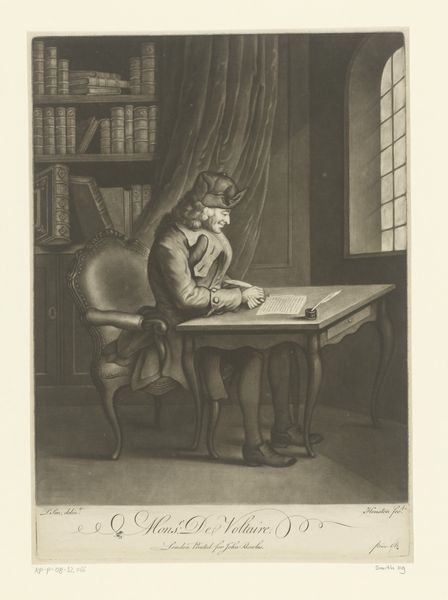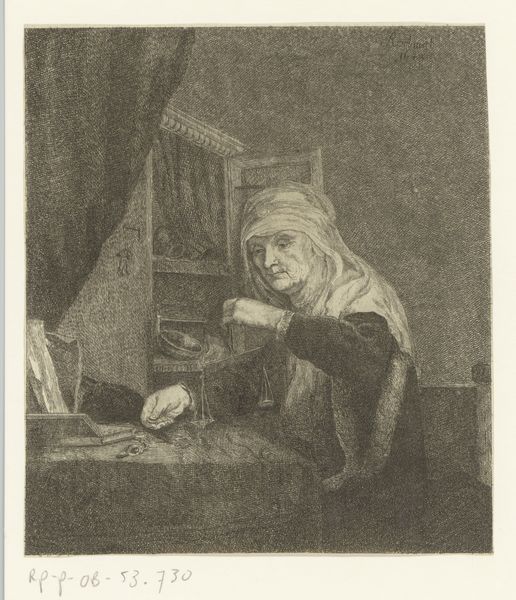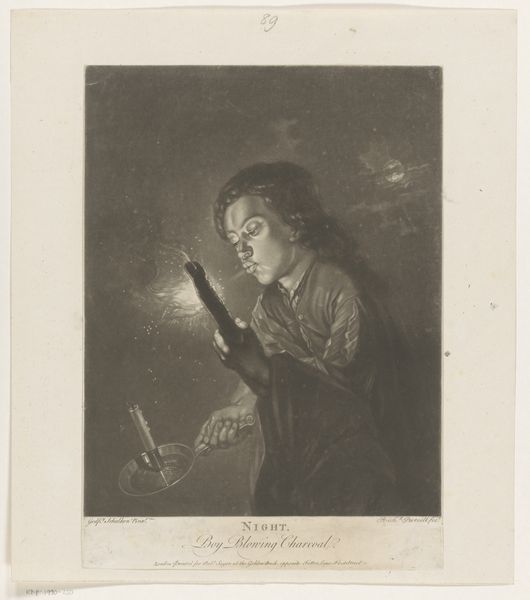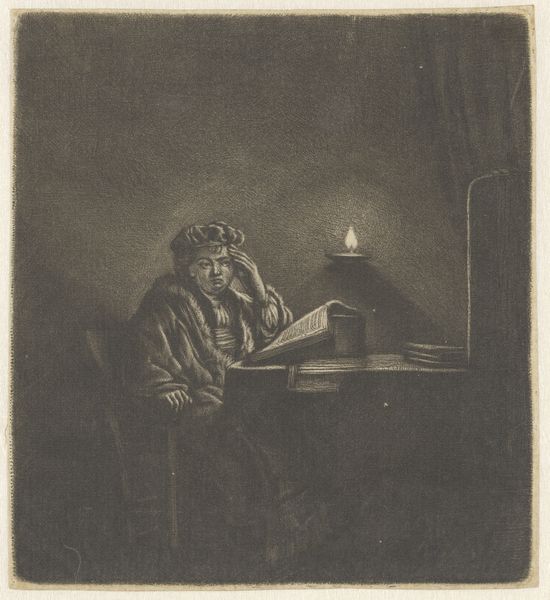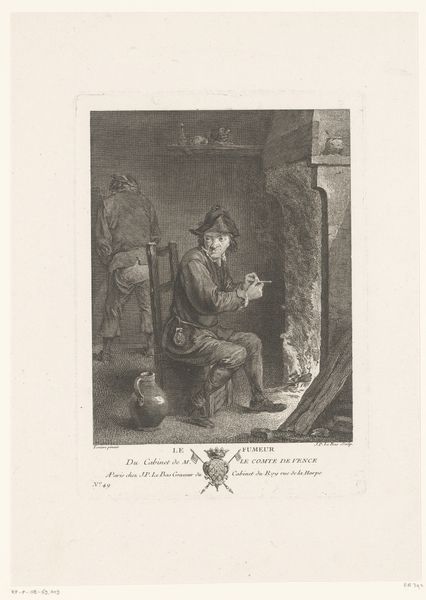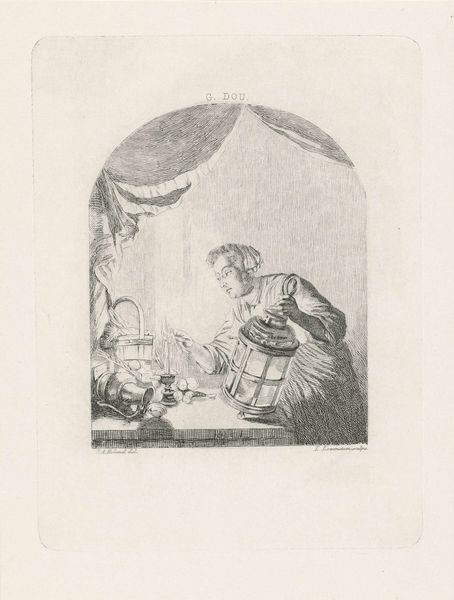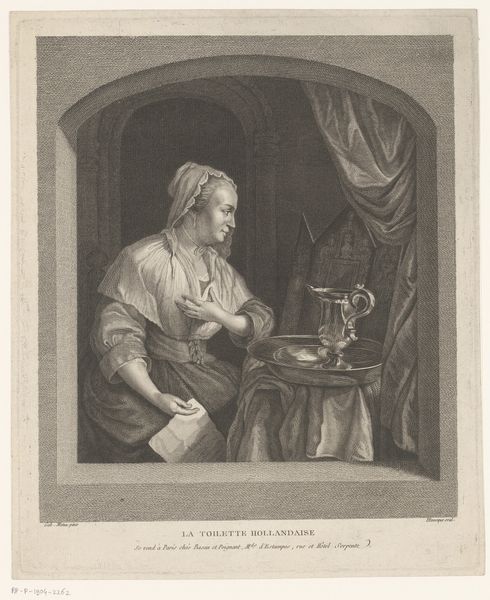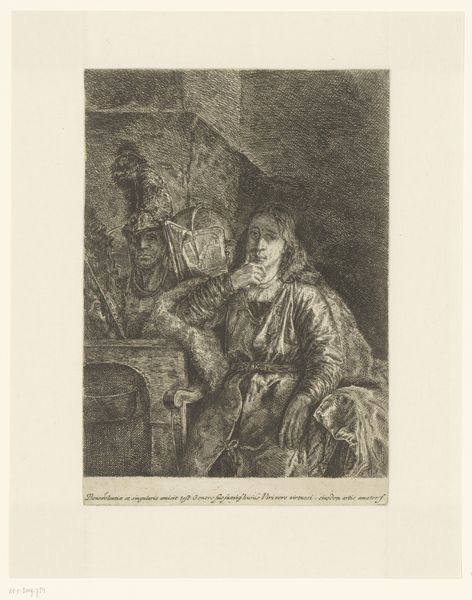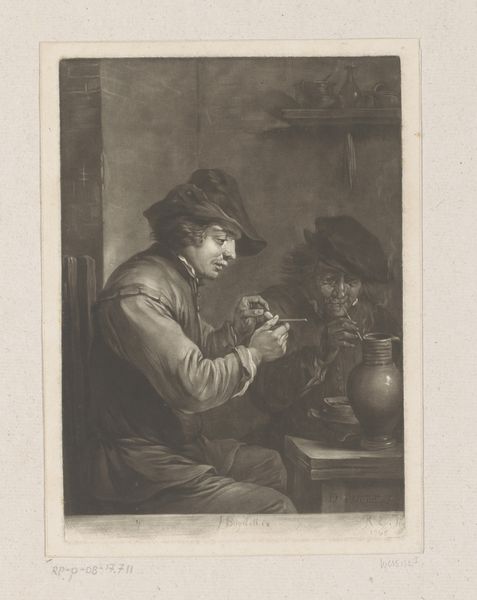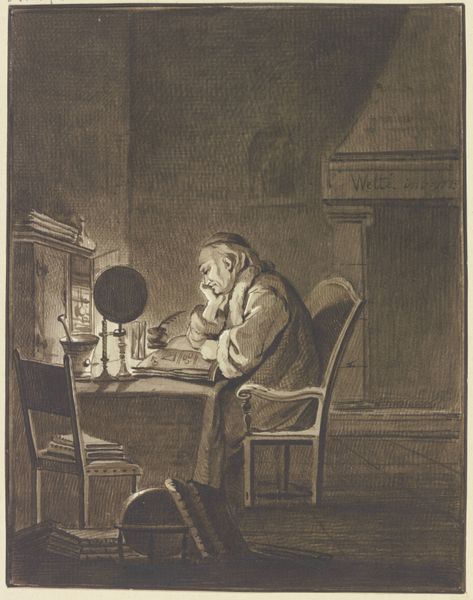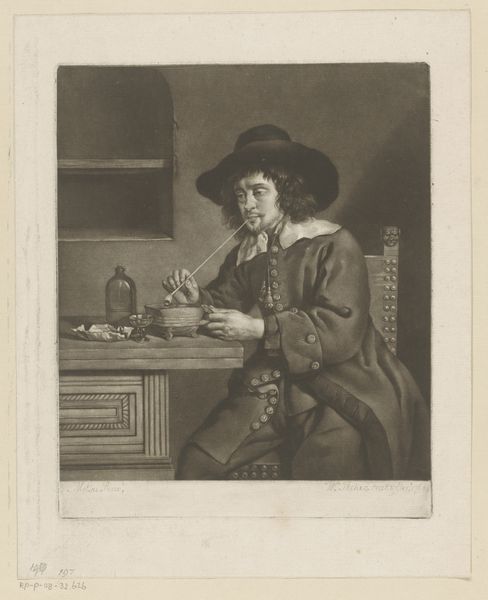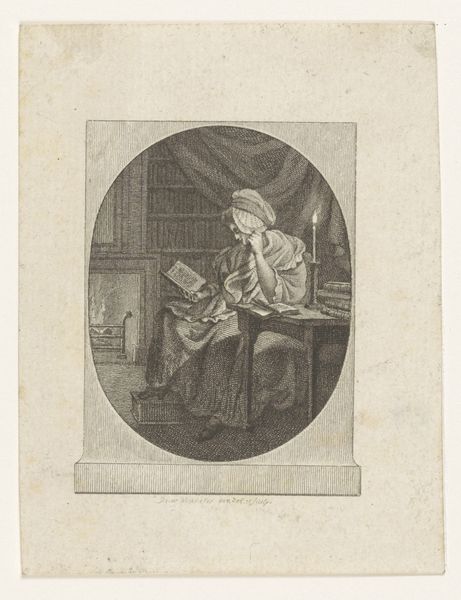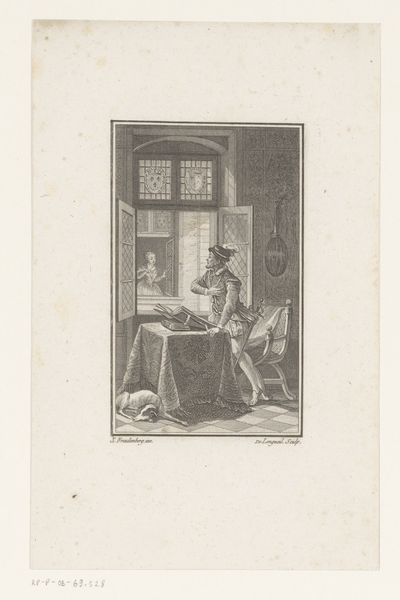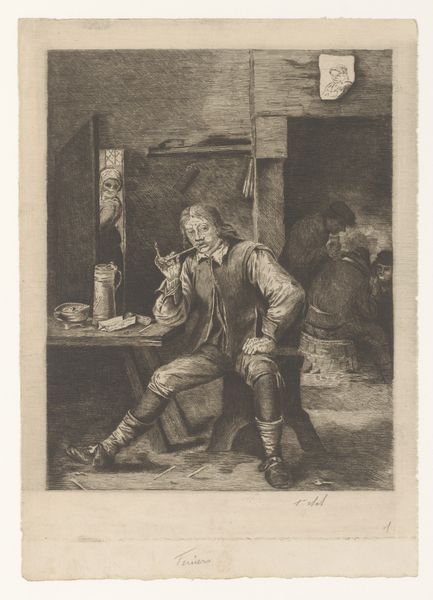
drawing, print, paper, engraving
#
portrait
#
drawing
#
aged paper
#
narrative-art
# print
#
paper
#
romanticism
#
19th century
#
genre-painting
#
engraving
Dimensions: height 362 mm, width 255 mm
Copyright: Rijks Museum: Open Domain
Curator: Here we have “Pijp rokende man,” or “Man Smoking a Pipe,” an engraving by A.F. Brauer, created in 1799. Editor: Immediately, the stark contrasts of light and shadow draw me in. There’s an intimacy to the scene; a single figure illuminated against a dark backdrop. The composition is very enclosed as well, quite claustrophobic. Curator: That play of light certainly amplifies the intended atmosphere. The artist masterfully uses light and shadow to direct our gaze and accentuate the subject’s introspective state. It conforms perfectly to the Romanticism's emphasis on individual feeling and experience. We should also note the precise rendering achieved through the engraving technique, notice how meticulously all forms are constructed through networks of fine, deliberate lines. Editor: Indeed. And viewing it through a socio-historical lens, tobacco played a vital role in 18th and 19th century economics and social rituals. To portray a solitary smoker then… does this glorify the act, perhaps? Or present a moral comment on leisure in society? It might also signal a rising mercantile class having both the means and access to global commodities once exclusive to royalty. Curator: Perhaps, but one could also observe the structural significance of the window frame itself, creating layers of depth, acting simultaneously as an enclosure and a gateway. A compelling play between confinement and potential transcendence. We might also consider semiotically how objects such as the pipe and candlestick serve to ‘code’ the composition, imbuing it with distinct meaning that is reinforced through repetition. Editor: I hadn’t considered that. Contextually speaking, I am drawn to speculate on how images like this influenced public perceptions toward class, pleasure, and even personal vices. Printmaking processes made artworks more widely available; disseminating and perhaps even normalizing scenes such as this within bourgeois life. Curator: True, but let us not overlook how the lines delineate planes of space. Brauer masterfully employs a convergence of orthogonals to augment spatial recession… it makes you realize what visual strategies were being employed. Editor: Overall, this artwork seems to exemplify how quotidian objects and actions carry far-reaching meanings when carefully rendered and disseminated during a very transformative epoch in history. Curator: And it demonstrates, as we've noted, how a work's inherent design, formal properties and material construction directly contributes to these broader cultural interpretations. Thank you for highlighting these layers.
Comments
No comments
Be the first to comment and join the conversation on the ultimate creative platform.
